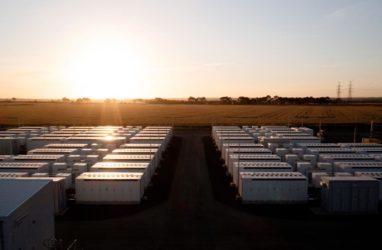Feed aggregator
Denmark joins call to impose ‘solidarity levies’ on biggest polluting sectors
Climate tech firm launches spin-off for carbon capture and fertiliser production
Our dystopian climate isn’t just about fires and floods. It’s about society fracturing | Bill McKibben
Climate disasters risk pulling society apart. To survive we need solidarity – and only one ticket in the US election offers that
Even as the good people of Florida’s west coast pulled the soggy mattresses from Helene out to the curb, Milton appeared on the horizon this week – a double blast of destruction from the Gulf of Mexico that’s a reminder that physics takes no time off, not even in the weeks before a crucial election. My sense is that those storms will help turn the voting on 5 November into a climate election of sorts, even if – as is likely – neither Kamala Harris nor Donald Trump spend much time in the next 25 days talking about CO2 or solar power.
That’s because these storms show not only the power of global heating (Helene’s record rains, and Milton’s almost unprecedented intensification, were reminders of what it means to have extremely hot ocean temperatures). More, they show what we’re going to need to survive the now inevitable train of such disasters. Which is solidarity. Which is something only one ticket offers.
Continue reading...English water system singled out for criticism by UN special rapporteur
Prof Pedro Arrojo-Agudo says regulator Ofwat ‘complacent’ about water firms putting their shareholders before public
The privatised English water system has been singled out for criticism by the UN special rapporteur on the human right to clean water.
Prof Pedro Arrojo-Agudo said water systems should be managed as a publicly owned service, rather than run by private companies set up to benefit shareholders.
Continue reading...Global tax on aviation, shipping could raise $200 bln annually by 2035 -IMF
Andrew Forrest says net zero is ‘fantasy’ so his goal is ‘real zero’. What does he mean – and can he achieve it? | Temperature Check
The mining tycoon says his iron ore business will stop using fossil fuels by the end of the decade without carbon offsets or carbon capture and storage
- Get our breaking news email, free app or daily news podcast
About $45 trillion of global business revenue is covered by corporate “net zero emissions” pledges but iron ore billionaire Andrew “Twiggy” Forrest thinks the whole net zero thing is “fantasy”.
“Now is the time to walk away from net zero 2050, that hasn’t been anything really but a con to maintain fossil fuels,” Forrest said last week.
Sign up for Guardian Australia’s breaking news email
Continue reading...Satellite data tool finds methane leaks could be higher than reported in Australia
Energy emissions will peak in 2024, but Paris goals still out of reach -report
Euro Markets: Midday Update
SwitchedOn Podcast: How time-of-use tariffs could become a recipe for bill shock
The post SwitchedOn Podcast: How time-of-use tariffs could become a recipe for bill shock appeared first on RenewEconomy.
UK govt agency finds most ecosystems at higher risk
INTERVIEW: The key ingredients for selling cookstove credits at $35/t
Climate Impact Partners, Deloitte launch programme to fund UK seagrass restoration
INTERVIEW: India can be massive carbon removals supplier, but lacks local demand
Renewables ramp up beyond policy plans but won’t hit COP28 target, IEA says
Google DeepMind co-founder shares Nobel Chemistry Prize
Shanghai unveils local voluntary methodology for salt marsh restoration
Anger at UK’s ‘bonkers’ plan to reach net zero by importing fuel from North Korea
Government criticised over list of potential countries for sourcing biomass, which also includes Afghanistan
A plan by the British government to burn biomass imported from countries including North Korea and Afghanistan has been described as “bonkers”, with critics saying it undermines the credibility of the UK’s climate strategy.
A bioenergy resource model, published in late summer, calculates that only a big expansion in the import of energy crops and wood from a surprising list of nations would satisfy the UK’s plan to meet net zero.
Continue reading...BRIEFING: Australia’s draft plan of attack on feral cats a good step forward, but implementation and cash will be key
Australia’s big battery fleet now making more money from arbitrage than frequency control
The post Australia’s big battery fleet now making more money from arbitrage than frequency control appeared first on RenewEconomy.





